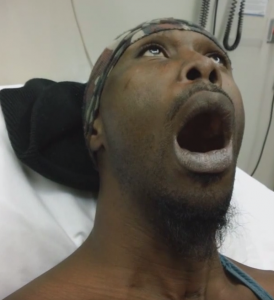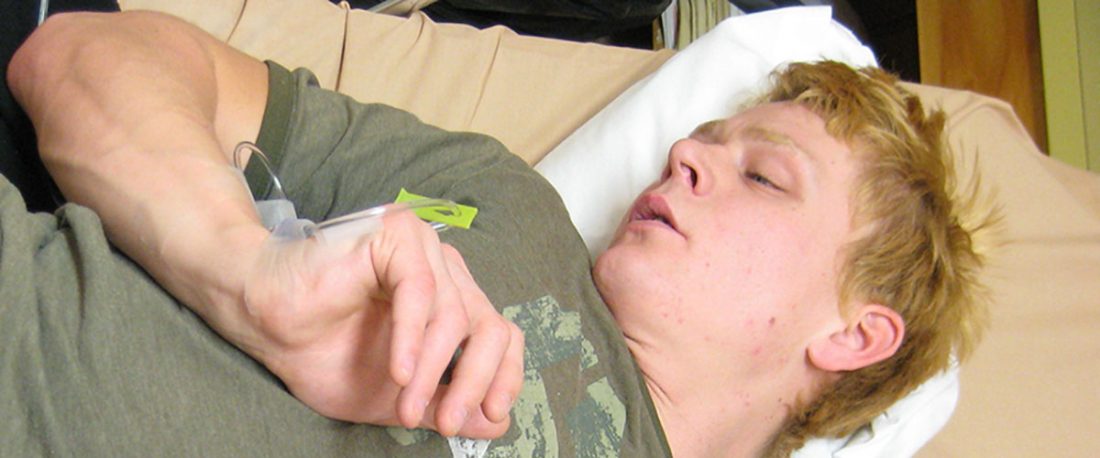You are probably very familiar with giving PRN Procyclidine to help patients with extrapyrimidal side effects… but it is worth knowing that occasionally dystonic reactions can be so severe, they can be life-threatening. This post should help you:
- Identify those most at risk of acute dystonic reaction
- Understand and identify what are the most life-threatening symptoms.
- Feel comfortable with what you can do to help.
Warning: you may find the videos posted here upsetting.
 This video shows a gentleman being treated at Augusta University Medical Center (Georgia, U.S.) for an acute dytonic reaction. The drug and route used to treat him may be unfamiliar to Bristish mental health nurses, but there is a lot to gain from watching the video. It may help to answer these questions:
This video shows a gentleman being treated at Augusta University Medical Center (Georgia, U.S.) for an acute dytonic reaction. The drug and route used to treat him may be unfamiliar to Bristish mental health nurses, but there is a lot to gain from watching the video. It may help to answer these questions:
- What symptoms do you recognise as being those of acute dystonia?
- What medication did he take before attending the E.R.?
- What other questions did the medic ask the patient?
- How long did it take to recover from the dystonic episode?
There are two very useful links to learn more about acute dystonic reactions:
- RCEM Learning: Dystonia. Royal College of Emergency Medicine. UK-based site. Although medically-minded, it’s a straightforward read.
- Medscape: Medication-Induced Dystonic Reactions. US-based (meaning treatment options may not be transferrable). Again, this site is medically-minded but accessible. It’s also very well categorised. The site may require a log-in, but this should be a one-off, is free and can be done in a minute or two.
From these sites, try to answer the following questions:
- What mental health medications are most likely to cause a dystonic reaction?
- Why is this? (in other words, which neural pathway is being affected, and what neurotransmitters / receptors are thought to be involved?)
- What recreational drugs increase the risk of dystonia?
- What non-pharmacological factors can increase the risk of dystonia?
- When are service-users most likely to experience dystonia?
- What are the general symptoms, and what are the most dangerous symptoms?
- What medication (and route) can be given by mental healhth nursing staff to manage dystonia, and for how long?
You may have come across the term occulogyric crisis as a symptom of dystonia before, and you can see some evidence of it in the first video. For a more pronounced example of it, have a look at the video below.
Further Academic Reading
For qualified NHS staff, see the Resources page for how to access these articles.
- Peter N. van Harten, Hoek, H.W. & Kahn, R.S. 1999, “Fortnightly Review: Acute Dystonia Induced by Drug Treatment”, BMJ: British Medical Journal, vol. 319, no. 7210, pp. 623-626.
- Oyewole, A., Adelufosi, A. & Abayomi, O. 2013, “Acute dystonic reaction as medical emergency: a report of two cases”, Annals of medical and health sciences research, vol. 3, no. 3, pp. 453.


Thank you for sharing this great article with us. This will be really helpful. KEEP WRITING more article like this one.